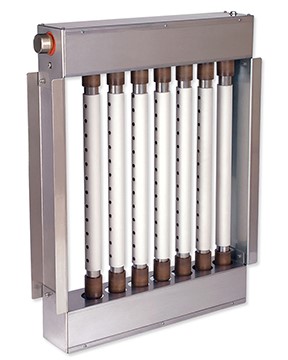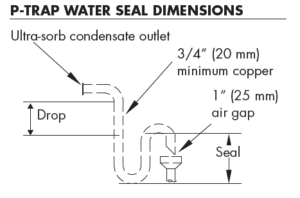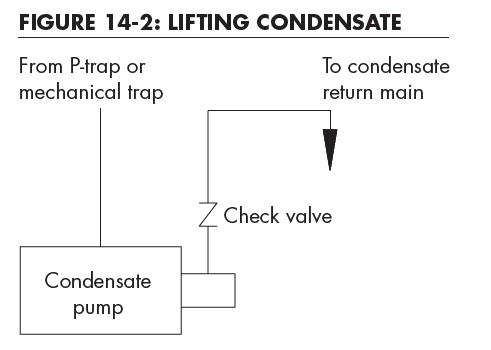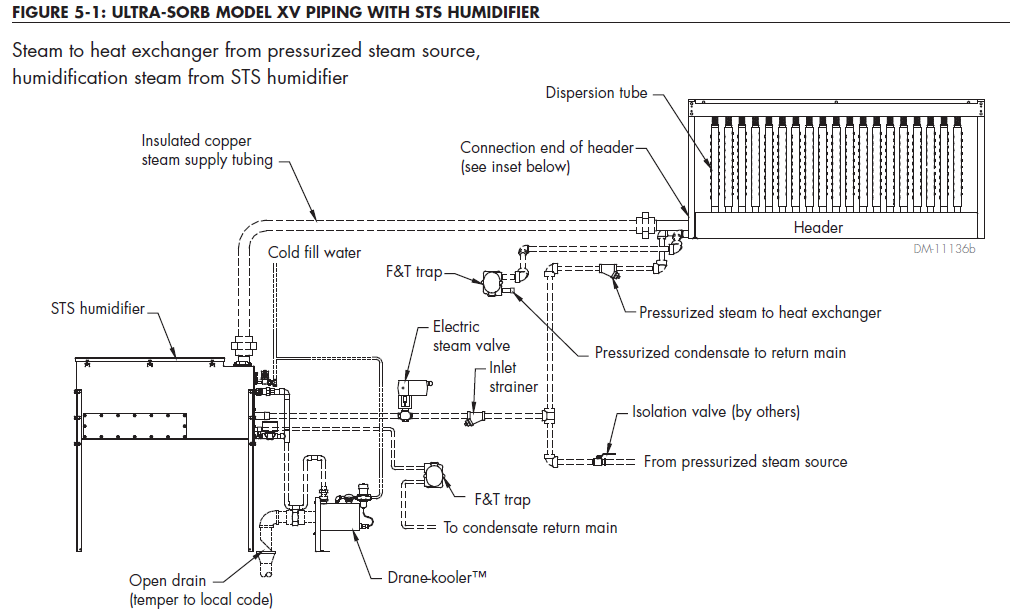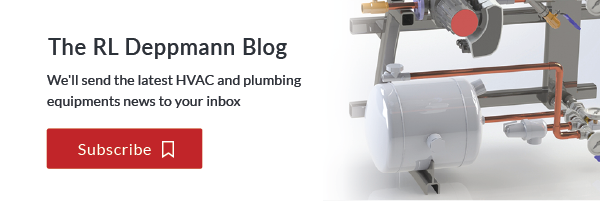Proper operation of steam humidifiers includes proper handling of the condensate created while heating the metal surfaces. This week, the Monday Morning Minutes post provides some tips for handling humidifier condensate when using steam humidifiers.
The purpose of the panel humidifier shown below is to disperse steam into the air through the orifices in the panel humidifier tubes. Since the steam humidifier is in the air stream, the surfaces cool and some of the steam is used to heat the metal. That steam condenses and drains out of the bottom of the panel. Now we have to handle the condensate. If condensate piping causes the condensate to lift from the center line of the drain, the condensate will drain into the ductwork or AHU and you’ll get a wet duct area.
Humidifier Condensate Handling Options
Pressurized Steam from a Boiler
Let’s start with bucket steam traps. Bucket traps with a discharge check valve are normally used to lift humidifier condensate, since the open bucket handles light steam flashing better than Float and Thermostatic (F&T) traps. Bucket traps with lift should only be used on steam injection-type pressurized humidifiers.
The Dri-Steem panel humidifier dispersion LV and LH units used with pressurized steam are normally piped with condensate that’s piped to drain through a P-trap and condensate cooler. They may be piped to a gravity return through an F&T trap. If using a F&T trap, you must have a 12” vertical drop and the condensate cannot be lifted up.
Another method used for LH, LV, and MP Ultrasorb panels is to pipe a P-trap with dimensions as shown in the IOM. The condensate flows from the P-trap to a condensate pump or to a drain cooler, and finally is wasted down the drain.
Steam from a Humidifier (Electric, Gas, Steam-to-Steam)
When the steam for humidification is generated locally, there are two methods normally used to handle the condensate. First, moving the condensate to drain through a P-trap and condensate cooler is used most often. The second choice is to have the condensate drain by gravity, through a P-trap back to the humidifier source. This second choice is normally not available when the humidifier panel is located in an AHU. The AHU is normally mounted on a pad near the floor and the drain is just too low. Placing the panel in the ductwork rather than the AHU may elevate the panel to the point that the condensate may be recovered to save energy.
Steam from a Steam-to-Steam Humidifier Using the XV panel
There is a model XV panel option available which is unique and provides the best of all worlds when used in a steam-to-steam application. The steam-to-steam humidifier (STS) uses boiler steam to create clean steam for humidification. When coupled with the XV Ultrasorb panel, source condensate may be returned to the boiler while humidification condensate is absorbed and not wasted. This option saves both water and energy!

